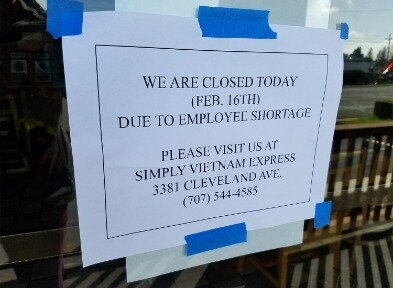Contents:

Current assets are available within 12 months; current liabilities are due within 12 months. A company has negative working if its ratio of current assets to liabilities is less than one . Successful negotiations with both parties will lead to higher working capital. The more payments that come in before outgoing payments are deployed, the more time you can devote to improving operations rather than compensating for low cash flow. A business’s working capital is also an indicator of its operational efficiency. If working capital is net-positive, this puts the business in a position to grow and reinvest in the organization.
Calculate how much you’ll pay in Square fees for online, in-person, and manually-entered payments. If you prefer that we do not use this information, you may opt out of online behavioral advertising. In addition, financial advisors/Client Managers may continue to use information collected online to provide product and service information in accordance with account agreements. And affiliated banks, Members FDIC and wholly owned subsidiaries of Bank of America Corporation. While it can be tempting to use a working capital line of credit to purchase machinery or real estate or to hire permanent employees, these expenditures call for different kinds of financing.
The non-cash working capital varies widely across firms in different sectors and often across firms in the same sector. Figure 10.2 shows the distribution of non-cash working capital as a percent of revenues for U.S. firms in January 2001. In addition, maintaining a positive net working capital is essential for building investor confidence. A strong balance sheet sends the message that the business has sound financial management practices and is well-positioned for sustained success. Having a positive net working capital also provides opportunities for growth and expansion.

It allows businesses to take advantage of new opportunities by investing in new projects or expanding into new markets. As treasurers, working capital management is a key part of our responsibilities. It is a metric of how efficiently a company is operating and how financially stable it is in the short term. In a perfect world, you’d always have more money flowing into your business than flowing out. Some businesses—often large ones with separate finance departments—choose to calculate net working capital differently by excluding cash or certain short-term liabilities.
AccountingTools
For instance, if you are only looking at the capital gains and losses from your payable bills, then the only difference you need to calculate is the difference between accounts payable and accounts receivable. It simply requires the organization of all your current assets and your current liabilities. A positive net working capital is one where the company can meet its obligations while still having remaining funds for investments, expansion, extended operations, and even emergencies. Working capital accounting is crucial to know where the business stands since it is its main source of payable.
First, add all the line items that are current assets on your balance sheet. Include cash and cash equivalents, investments and accounts receivable. There are several ways businesses can improve their net working capital. The first step is to analyze and review their cash flow management strategies. Businesses should focus on minimizing expenses, optimizing inventory levels, and managing accounts receivable and payable effectively. Next, you’ll need to add up all the company’s outstanding debts or obligations that are due within 12 months.
Business owners only need a balance sheet to calculate this important metric. The financial model for forecasting net working capital is commonly driven by a range of processes within your company’s financial workflows related to current assets and current liabilities. Net working capital refers to the difference between a company’s total current assets minus its total current liabilities. Therefore, net working capital is not itself a current asset, but a representation of the value of the difference. It is important to maintain a healthy balance of working capital, as it is a key indicator of a company’s financial health. Companies with a positive net working capital are able to pay their short-term obligations and have enough liquidity to cover their expenses.

Current assets are the resources that can be quickly converted into cash, such as accounts receivable, inventory and cash. Working capital is calculated by taking a company’s current assets and deducting current liabilities. For instance, if a company has current assets of $100,000 and current liabilities of $80,000, then its working capital would be $20,000.
Step 1. Balance Sheet Assumptions
This is another formula which looks at the relationship between net working capital and net sales to see how efficient the company is. Our goal is to deliver the most understandable and comprehensive explanations of financial topics using simple writing complemented by helpful graphics and animation videos. We follow strict ethical journalism practices, which includes presenting unbiased information and citing reliable, attributed resources.
LIVE CURRENT MEDIA INC. MANAGEMENT’S DISCUSSION AND ANALYSIS OF FINANCIAL CONDITION AND RESULTS OF OPERATION (form 10-K) – Marketscreener.com
LIVE CURRENT MEDIA INC. MANAGEMENT’S DISCUSSION AND ANALYSIS OF FINANCIAL CONDITION AND RESULTS OF OPERATION (form 10-K).
Posted: Fri, 21 Apr 2023 21:09:04 GMT [source]
Extending the payable days is most effective when you can offer volume purchases in exchange. Net working capital can also be used to estimate the ability of a company to grow quickly. If it has substantial cash reserves, it may have enough cash to rapidly scale up the business. Conversely, a tight working capital situation makes it quite unlikely that a business has the financial means to accelerate its rate of growth. The current ratio is a liquidity ratio that measures a company’s ability to cover its short-term obligations with its current assets.
A company can also improve working capital by reducing its short-term debts. The company can avoid taking on debt when unnecessary or expensive, and the company can strive to get the best credit terms available. The company can be mindful of spending both externally to vendors and internally with what staff they have on hand. Because small business owners’ business and personal finances tend to be closely intertwined, lenders will also examine your personal financial statements, credit score and tax returns. You can get a sense of where you stand right now by determining your working capital ratio, a measurement of your company’s short-term financial health. Inventory is a current asset, so it’s included in the net working capital formula.
How to Improve Net Working Capital
In order to determine what constitutes a current asset or a current liability, you can look at what is included and excluded from the calculation. A negative NWC is when the company has greater liabilities than what its assets are worth. In other words, the debts and operational costs are higher than what the company is able to afford. To avoid bankruptcy or acquisition, the company will have to secure a loan or investment and bring its NWC to at least “net-zero” or a positive state. Given that it is subject to only short-term assets and liabilities, it is bound to change every few months. These changes can be profitable or detrimental, depending on what factors have contributed to the change.
Insteel Industries Reports Second Quarter 2023 Results – businesswire.com
Insteel Industries Reports Second Quarter 2023 Results.
Posted: Thu, 20 Apr 2023 10:30:00 GMT [source]
In other words, is there a payoff to estimating individual items such as accounts receivable, inventory and accounts payable separately? The answer will depend upon both the firm being analyzed and how far into the future working capital is being projected. For firms where inventory and accounts receivable behave in very different ways as revenues grow, it clearly makes sense to break down into detail. The cost, of course, is that it increases the number of inputs needed to value a firm. In addition, the payoff to breaking working capital down into individual items will become smaller as we go further into the future. For most firms, estimating a composite number for non-cash working capital is easier to do and often more accurate than breaking it down into more detail.
Current Assets
Put simply, small businesses with lots of cash or high working capital may find it easier to withstand fluctuations in cash inflow. From covering expenses during off-seasons to enabling a business to operate in the event of an economic downturn, high working capital can safeguard against volatility. Using the pressure-washing business as an example, let’s say the business has $150,000 in cash and assets. But the business has a $20,000 loan on the company vehicle and a $15,000 outstanding business loan.
At the end of the 2000 financial year , the Gap reported $1,904 million in inventory and $335 million in other non-cash current assets. At the same time, the accounts payable amounted to $1,067 million and other non-interest bearing current liabilities of $702 million. The non-cash working capital for the Gap in January 2001 can be estimated. Similarly, change in net working capital helps us to understand the cash flow position of the company. So if the change in net working capital is positive, it means that the company has purchased more current assets in the current period and that purchase is basically outflow of the cash. Similarly, negative change in net working capital means that current liabilities has increased in this period.
For instance, a brick and mortar retailer that is growing mostly online may have a very different marginal working capital requirement than the total. Having a positive net working capital is crucial for businesses as it indicates that they have enough current assets to cover their current liabilities. This means that the business can continue its operations without having to rely on external sources of finance. Determine Current Liabilities from the company’s balance sheet for the current and previous period. Current liabilities include accrued expenses, payables, deferred revenue, etc. Improving working capital can help businesses run more efficiently and increase their profitability.
Below is a breakdown of the assets and liabilities typically used in the calculation. The general rule is that receivables and payables with a timeframe of fewer than twelve months are considered “current”. Working capital management is a financial strategy that involves optimizing the use of working capital to meet day-to-day operating expenses while helping ensure the company invests its resources in productive ways. Effective working capital management enables the business to fund the cost of operations and pay short-term debt. Investors use NWC to know whether a company is liquid enough to pay off its short-term liabilities.
Additionally, businesses should monitor their cash flow in order to ensure that they have enough money on hand to cover expenses. Finally, businesses should review their inventory levels regularly in order to ensure they have the right amount of inventory needed to meet customer demand. The formula for calculating net working capital is simple, but it is important to only include current assets and liabilities.
A company has positive working capital if it has enough cash, accounts receivable and other liquid assets to cover its short-term obligations, such as accounts payable and short-term debt. In simple terms, net working capital denotes the short term liquidity of a company. It is calculated as the difference between the total current assets and the total current liabilities. A good net working capital ratio is indicative of your company’s financial health. It depicts the balanced manner in which a business manages its debts, while also putting enough cash into long-term investments for the scaling of the business.
Additionally, the company can reduce their short-term debts by refraining from taking on unnecessary or pricey debt and being aware of spending internally with staff and externally with vendors. The inventory turnover ratio is an indicator of how efficiently a company manages inventory to meet demand. Tracking this number helps companies ensure they have enough inventory on hand while avoiding tying up too much cash in inventory that sits unsold. If revenue declines and the company experiences negative cash flow as a result, it will draw down its working capital. Investing in increased production may also result in a decrease in working capital. Working capital management focuses on ensuring the company can meet day-to-day operating expenses while using its financial resources in the most productive and efficient way.
ATLANTIC COASTAL ACQUISITION CORP. Management’s Discussion and Analysis of Financial Condition and Results of Operations. (form 10-K) – Marketscreener.com
ATLANTIC COASTAL ACQUISITION CORP. Management’s Discussion and Analysis of Financial Condition and Results of Operations. (form 10-K).
Posted: Fri, 21 Apr 2023 20:33:15 GMT [source]
If a bookkeeping boston’s current assets do not exceed its current liabilities, then it may have trouble growing or paying back creditors. When non-cash working capital decreases, it releases tied-up cash and increases the cash flow of the firm. The question, however, becomes whether it can be a source of cash flows for longer than that. At some point in time, there will be no more inefficiencies left in the system and any further decreases in working capital can have negative consequences for revenue growth and profits. Therefore, we would suggest that for firms with positive working capital, decreases in working capital are feasible only for short periods.
What is current ratio and how to calculate it
It may seem daunting at first to sit and crunch the numbers, but once you get a handle on where your business sits, you can strategize on how to increase efficiency and maximize your business operations. Small business owners often make the mistake of pouring working capital into fixed assets, like a larger location or updated equipment. While these purchases might be necessary, they’re not always the best use of working capital.
You can obtain the non-cash working capital as a percent of revenues by looking at the firms history or at industry standards. In summary, effective management of net working capital creates sustainable value by providing decision-makers with much-needed insights and reaction agility. It also strengthens the company’s financial position and is an important pillar of Treasury Management. Net working capital shows how well a business can pay its bills in the immediate future. It can also reveal whether a company uses its short-term assets effectively.
- Given that it is subject to only short-term assets and liabilities, it is bound to change every few months.
- While the term is often used to measure liquidity, it can also be used to measure operational efficiency.
- Current LiabilitiesCurrent Liabilities are the payables which are likely to settled within twelve months of reporting.
- Net working capital is a liquidity ratio which shows whether a company can pay off its current liabilities with its current assets.
Another options is to be more active in collecting outstanding accounts receivable, though there is a risk of annoying customers when collection activities are overly aggressive. A third option is to engage in just-in-time inventory purchases to reduce the inventory investment, though this can increase delivery costs. You might also consider returning unused inventory to suppliers in exchange for a restocking fee. Or, consider extending the number of days before accounts payable are paid, though this will likely annoy suppliers.
- When a working capital calculation is positive, this means the company’s current assets are greater than its current liabilities.
- On the other hand, short-term debts can end up causing a major burden.
- By submitting this form, you agree that Planergy may contact you occasionally via email to make you aware of Planergy products and services.
Deferred revenue, such as advance payments from customers for goods or services not yet delivered. Current LiabilitiesCurrent Liabilities are the payables which are likely to settled within twelve months of reporting. They’re usually salaries payable, expense payable, short term loans etc. The goal, for any business’ financial team, is to have a working capital that is above “net zero” but not flush with cash. The idea is to have enough to pay all loans, while also leaving room to grow profitably and invest in high-return ventures.
